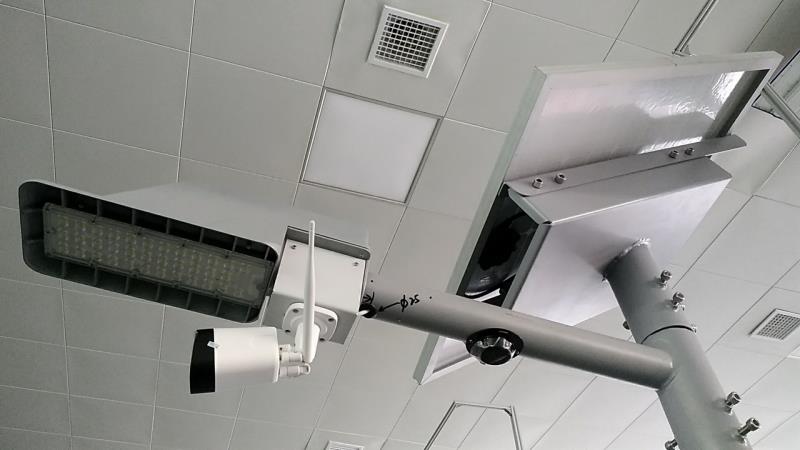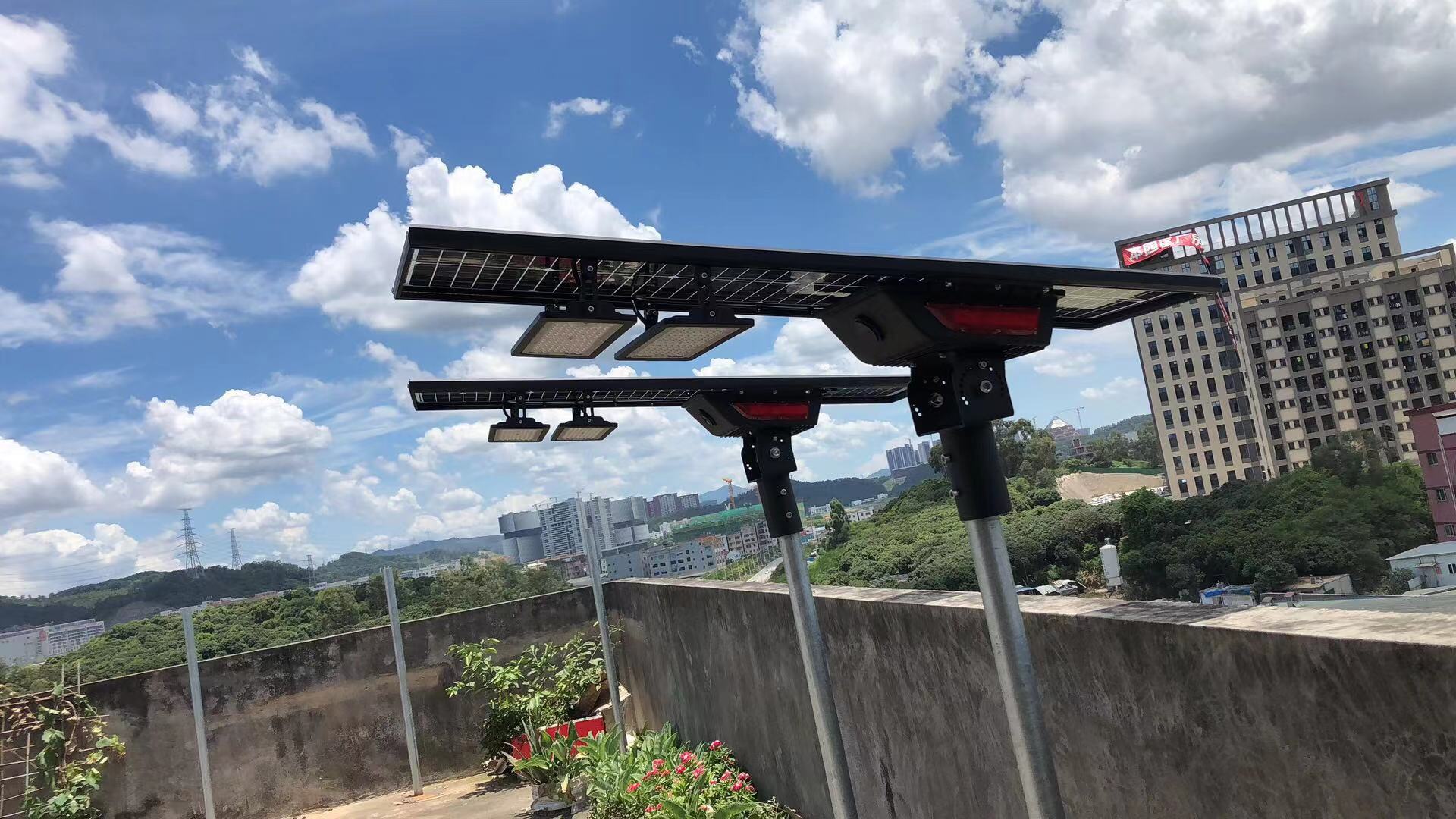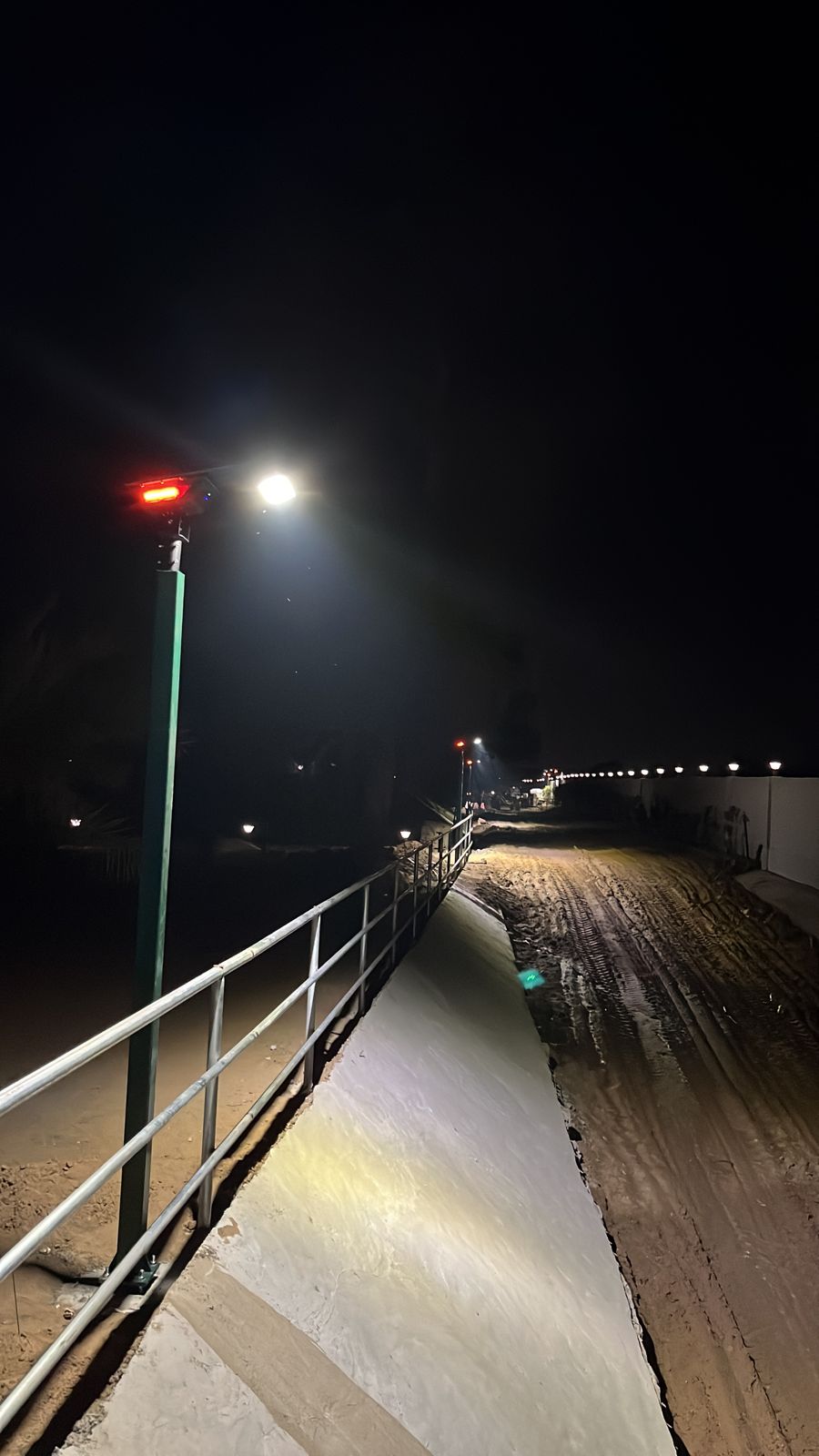According to the physical structure of the entire solar street light, we can divide the solar street lights on the market into one-piece lights, two-body lights and split lights. So, which of these three lights is the best? When I am faced with these three lights, how should I choose? Hishine Group Limited uses its own products for analysis.
Split solar street lights are the earliest products to appear. Subsequent two-body lights and one-piece lights are optimized and improved on the basis of split street lights. Therefore, we introduce them one by one in chronological order. The split solar of Hishine Group Limited is called Hi-Small split solar street light, we are able to design this lamp according to customer's requirements.
The biggest feature of the split lamp is that the main components can be flexibly paired and combined into any system, and the expandability of each component is also very strong, so the split system can be large or small, and it can change infinitely according to the needs of users. So flexibility is its main advantage. However, such a pairing combination is not so friendly to users. Since the components sent by the manufacturer are all independent parts, the workload of assembling and wiring becomes larger. Especially in the case of many unprofessional installation workers, the probability of making mistakes is greatly increased.
But the dominance of split lamps in larger systems cannot be shaken by two-body lamps and one-piece lamps. Greater power or working time means greater power consumption, which requires large-capacity batteries and high-power solar panels to support. Due to the limitation of the battery compartment of the lamp, the two-body lamp has a limited battery capacity; the one-piece lamp is greatly limited in the power of the solar panel.
Therefore, split solar lights are suitable for systems with high power or long working hours.
Aiming at the problems of high cost and difficult installation of split lamps, we have optimized and proposed a two-body lamp solution. The so-called two-body lamp is to integrate the battery, the controller and the light source into the lamp. The four form one body, and the separate solar panel forms a two-body. Of course, the scheme of the two-body lamp is formulated around the lithium battery, which can only be realized by relying on the advantages of the small size and light weight of the lithium battery.
1) Easy installation: Since the light source and battery are pre-connected to the controller before leaving the factory, only one line comes out of the LED light, which is connected to the solar panel. This line needs to be connected by the customer at the installation site. 3 groups of 6 wires have become 1 group of 2 wires, and the probability of error has been reduced by 67%. Customers only need to distinguish the positive and negative poles. The positive and negative poles of our solar panel junction boxes are marked with red and black to prevent customers from making mistakes. In addition, we also provide an error-proof male-female plug solution, which cannot be inserted if the positive and negative connections are reversed, completely eliminating wiring errors.
2) High cost performance: Compared with the split-type solution, with the same configuration, the two-body lamp has one less battery case, and the material cost will be lower. In addition, customers do not need to install batteries during installation, and the cost of installation labor will also be reduced.
3) There are many power options and a wide range of applications: With the popularity of two-body lamps, various manufacturers have launched their own molds, and the options are becoming more and more abundant, with large and small sizes. Therefore, there are many options for the power of the light source and the size of the battery compartment. The actual driving power of the light source can be found in the market from 4W to 80W, but the most concentrated system is 20~60W. In this way, solutions can be found in the two-body lamp for small gardens, rural roads, and township main roads, which provides great convenience for the implementation of the project.
Although the two-body lamp has gradually become the main force of solar street lamps, but there is nothing perfect, it still inevitably has some limitations.
1) The limitation of the large system: the size of the battery compartment is fixed when the lamp is molded, so when encountering a high-power light source, working hours and rainy days are very demanding, the battery compartment will inevitably be stretched. Therefore, it can only be supported between high power, long working hours, and long rainy days. There are always one or two compromises, or the relationship between the three is balanced to obtain a more balanced system.
2) Restrictions in high cold areas: Since the installation position of the lithium battery in the two-body lamp has been fixed in the lamp, and the size of the battery compartment has also been fixed, the possibility of solving the temperature of the battery by burying the ground in the high cold area has already been limited. zero. The normal operation of the system at low temperature can only be realized by special low-temperature batteries, but the price of the low-temperature batteries themselves is relatively expensive, so this brings some inconvenience to the use of two-body lights in alpine regions.
The integrated lamp is to integrate the battery, controller, light source, and solar panel into the lamp. It is more thoroughly integrated than the two-body lamp. This solution does bring convenience to transportation and installation, but it also has certain limitations, especially for areas with relatively weak sunlight.

1) Easy installation, no wiring: All the wires have been pre-connected to the integrated light, so customers don’t need to wire again, which is a great convenience for customers.
2) Convenient transportation and low freight: All the parts are gathered together and packed in a carton, which reduces the transportation volume and saves freight.
1) Low lighting efficiency: There are three reasons: ❶Limited light source power. The size and power of the solar panel in the integrated lamp are limited by the size of the lamp, that is to say, the daily power generation is limited, so the power consumption is bound to be limited, and the power of the light source or the working time/method are limited. ❷The lamp angle is limited. It was explained earlier that the inclination angle of the integrated lamp must accommodate the angle of the solar panel, so in many places the angle cannot be adjusted arbitrarily according to needs. ❸ Arm length is limited. Most of the one-piece installation methods are directly fixed on the main pole of the lamp pole, and the lamp itself is the support arm (as shown in the figure below). However, the length of the lamp is fixed. If the lamp pole is far away from the curb, the light source cannot extend above the road surface, and the area covered by the street lamp will be affected.
2) High after-sales cost: Once a street lamp is damaged, it must be disassembled as a whole, and there is no way to selectively remove a certain part, so the after-sales cost is relatively high.
3) High price: Although the highly integrated method saves some material costs, the price of one-piece lights on the market is not low, and even two-body lights with the same configuration are much more expensive.
Although the integrated light has some limitations, it is still a good solution as long as the area and place of application are suitable.

1) Applicable areas: low latitude areas with very good sunshine. Good sunshine can alleviate the problem of solar power limitation, and low latitude can solve the problem of solar panel inclination, so you will find that most of the integrated lights are exported to Africa, the Middle East, Southeast Asia and other regions.
2) Places of use: courtyards, trails, parks, residential areas and other roads dominated by people. These small roads mainly serve pedestrians. Pedestrians move slowly and have low lighting requirements. The integrated lights can well meet the needs of these places.
Author 2025-06-12
Hishine Group Limited Will Meet Customers In Mexico City.Hishine is thrilled to announce its participation in Expo Eléctrica International 2025, Latin America’s premier trade fair for power and lighti...
Author 2025-05-12
Our recent business trip to Saudi Arabia proved to be a pivotal step in strengthening partnerships and exploring opportunities in the Kingdom’s rapidly growing energy and lighting markets. Below are t...